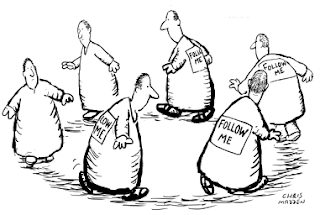
Description
Course Description
How do others influence your behaviour? How are you influenced by social situations? Do you easily fall for conformity tactics? Would you obey authority, even though you are morally opposed to the suggested course of action? These are some of the questions that are addressed in this course ‘Fundamentals of Social Psychology’.
In this course, students are introduced to core concepts, frameworks, models and theories of social psychology. We cover the scientific study of how people’s thoughts, feelings, and behaviours are influenced by the presence of others. This course also provides a critical perspective by challenging social institutions, practices and power relations that constitute forms of inequality and oppression.
In this course, students discuss core topics that are related to current real-life situations. For example, students will learn about racism, conspiracy theories, social media, effects of physical distancing, mediated social networks, hate crimes, prejudice along with other current topics. Students also learn about social perception, social cognition, the social self, attitude/attitude change, conformity, and group processes. Furthermore, we take a critical perspective by also incorporating feminist scholarship, queer theory, critical race psychology, and social constructivism.
Course Materials and Text:
The required readings:
Aronson, E. Wilson, T. D., Fehr, B, Akert, R. M. (2017) Social Psychology, Sixth Canadian Edition, Pearson.
Gough, B., McFadden, M., McDonald, M. (2013), Critical Social Psychology: An Introduction, Second Edition, Palgrave Macmillan.
Recommended Readings:
Gough, B. (2017) The Palgrave Handbook of Critical Social Psychology, Palgrave Macmillan.
The power-point lecture notes will be posted on the course website before each class.
URLs and other electronic sources may be posted on the course website from time to time. Please visit the course website to get this material.
Course Format
This is a remote course, not an online course like those given by E-Concordia. You are expected to watch the pre-recorded videos, and read the material on your own – then attend online Zoom session where we will do activities and have a question and answer period.
The lectures will be pre-recorded and released on this site on the dates listed in the schedule. The Zoom activities and discussions will not be recorded so students can feel comfortable sharing ideas and thoughts without fear of being filmed and broadcast. Students will be expected to turn on their cameras and engage with each other.
| Course Evaluation | Grade Weight | ||||
| Blog 1 | 20% | ||||
| Blog 2 | 20% | ||||
| Reading Notes/Lecture Questions | 15% | ||||
| Reading Responses | (3×15%) | 45% | |||
Assignments
Blogs:
Video Explanation of Blog Assignments
Students will write two blogs of about 600 – 1000 words about a social psychology topic that was covered in the course lectures and/or required readings. Although this is a blog, the information conveyed must come from research, not conjecture. The blog must contain at least five reliable, valid, credible sources. The blog must address an appropriate audience – make sure the information is conveyed to this audience based on their level of knowledge of the subject matter. Students with production skills can produce a video or a podcast instead of a blog, however this must also be approved by me (Erik Chevrier).
Reading Responses:
Video Explanation of Reading Response Assignments
Instructions for the Reading Responses
Students will answer three more comprehensive questions about the readings and lectures at three times during the course. The objective of this assignment is to evaluate whether students understand the information covered in the lectures and readings. Students will be given the questions a week before the reading assessment is due. The report must incorporate references to the readings from the course and at least three external sources.
Reading Notes/Lecture Questions:
Video Description of Reading Notes/Lecture Questions Assignment
Students must submit hand-written notes (so I know that they are authentic and not copied and pasted) for each reading (you can send me a scan or photo) and the answer to a short question (200 words max) for each pre-recorded video lecture. We will also meet via Zoom and participate in discussions and activities with fellow classmates. For these dates, please see the schedule below – they are listed as ‘Check-In and Activities’.
For each class the notes will be worth 1 point.
For the ‘Check-In and Activity’ days, you will get 1 point for showing up and participating in the discussion/activities or 1 point for answering the discussion questions on your own time and emailing them to me.
You will get 1 point for each lecture question you answer.
At the end, I will tally the notes, activities and lecture questions that you submitted and make it proportional to the amount I assigned. (I changed the formula because I am giving you less readings and lecture questions than I originally planned).
Reading notes must be submitted before 11:30 am on the day that lists the required readings. For example, on the 15th of September they syllabus lists,
“September 15 – Introduction to Social Psychology
Chapter 1 – Introduction to Social Psychology (pp. 1 – 19)
Aronson, E. Wilson, T. D., Fehr, B, Akert, R. M. (2017) Social Psychology, Sixth Canadian Edition, Pearson.“
These reading notes are due on September 15th at 11:30 am.
A video lecture of the Introduction to Social Psychology will also be uploaded on the day it is listed in the syllabus. For example, on September 15th, I will broadcast a video lecture of Introduction to Social Psychology and I will also post a question to respond to pertaining to the information in the lecture. You have until Saturday, at midnight, of the same week, to submit the response. For example, for the chapter on September 15th, the notes are due on September 15th at 11:30 but the lecture question is due on Saturday the 19th, at midnight – unless I instruct you otherwise.
Letter Grade Equivalency
Your numerical grades will be converted to letter grades as follows:
A+ (93 – 100%) B+ (77 – 79.9%) C+ (67 – 69.9%) D+ (57– 59.9%)
A (85 – 92.9%) B (73 – 76.9%) C (63 – 66.9%) D (53 – 56.9%)
A- (80 – 84.9%) B- (70 – 72.9%) C- (60 – 62.9%) D- (50 – 52.9%)
F < 50%
Lecture Schedule: Themes and Required Readings
This is a TENTATIVE schedule and is subject to change. Be sure to consult the course website regularly to be aware of any changes.
Course schedule, topics and required readings:
September 8 – Introduction to the Course
September 10 – Explanation of Assignments
Video Explanation of Blog Assignments
Video Description of Reading Notes/Lecture Questions Assignment
Video Explanation of Reading Response Assignments
September 15 – Introduction to Social Psychology
Chapter 1 – Introduction to Social Psychology (pp. 1 – 19)
Aronson, E. Wilson, T. D., Fehr, B, Akert, R. M. (2017) Social Psychology, Sixth Canadian Edition, Pearson.
Complete Lesson with Video and Question
Link to Power Point Presentation
September 17 – Introduction to Critical Social Psychology
Chapter 1 – Critical Social Psychology: An Introduction (pp. 3 – 33)
Gough, B., McFadden, M., McDonald, M. (2013), Critical Social Psychology: An Introduction, Second Edition, Palgrave Macmillan.
Chapter 3 – Doing Critical Psychology (pp. 67 – 98)
Gough, B., McFadden, M., McDonald, M. (2013), Critical Social Psychology: An Introduction, Second Edition, Palgrave Macmillan.
Complete Lesson with Video and Question
Link to Power Point Presentation
September 22 – Check in and Activities
September 24 – Social Cognition
Chapter 3 – Social Cognition: How We Think About the Social World (pp. 48 – 73)
Aronson, E. Wilson, T. D., Fehr, B, Akert, R. M. (2017) Social Psychology, Sixth Canadian Edition, Pearson.
Link to Video Lecture and Questions about Social Cognition and a Critique of Social Cognition
Power Point Presentation for Social Cognition and a Critique of Social Cognition
September 29 – A Critical Look at Cognitive-Experimental Social Psychology
Chapter 2 – A Critical Look at Cognitive-Experimental Social Psychology (pp. 34 – 66)
Gough, B., McFadden, M., McDonald, M. (2013), Critical Social Psychology: An Introduction, Second Edition, Palgrave Macmillan.
Link to Video Lecture and Questions about Social Cognition and a Critique of Social Cognition
Power Point Presentation for Social Cognition and a Critique of Social Cognition
October 1 – Check in and Activities
October 5 – (NO CLASS) Reading Response 1 Due at Noon
October 6 – Social Perception
Link to Video Lecture and Questions
Link to Power Point Presentation on Social Perception
Chapter 4 – Social Perception: How We Come to Understand Other People (pp. 74 – 105)
Aronson, E. Wilson, T. D., Fehr, B, Akert, R. M. (2017) Social Psychology, Sixth Canadian Edition, Pearson.
October 8 – Check in and Activities
October 13 – Self, Identity, Subjectivity in a Social Context
Complete Lesson with Video and Question
Power Point Presentation for the Self in a Social Context
Read one of the two chapters:
Chapter 5 – The Self: Understanding Ourselves in a Social Context (pp. 106 – 135)
Aronson, E. Wilson, T. D., Fehr, B, Akert, R. M. (2017) Social Psychology, Sixth Canadian Edition, Pearson.
Chapter 6 – Self, Identity, Subjectivity (pp. 159 – 187)
Gough, B., McFadden, M., McDonald, M. (2013), Critical Social Psychology: An Introduction, Second Edition, Palgrave Macmillan.
October 15 – Check in and Activities
October 20 – Attitudes and Attitude Change
Link to Video Lesson About Attitudes and Attitude Change
Chapter 6 – Attitudes and Attitude Change: Influencing Thoughts, Feelings and Behaviour (pp. 136 – 171)
Aronson, E. Wilson, T. D., Fehr, B, Akert, R. M. (2017) Social Psychology, Sixth Canadian Edition, Pearson.
October 22 – Check in and Activities
October 26 – (NO CLASS) Check in and Activities Blog 1 Due at Noon
October 27 – Conformity and Influencing Others
Link to Video Lesson about Conformity
Read one of the two chapters:
Chapter 7 – Conformity: Influencing Others (pp. 172 – 211)
Aronson, E. Wilson, T. D., Fehr, B, Akert, R. M. (2017) Social Psychology, Sixth Canadian Edition, Pearson.
Chapter 4 – Social Influence (pp. 99 – 125)
Gough, B., McFadden, M., McDonald, M. (2013), Critical Social Psychology: An Introduction, Second Edition, Palgrave Macmillan.
October 29 – Check In and Activities
November 2 – (NO CLASS) Reading Response 2 Due at Noon
November 3 – Group Processes
Link to Video Lesson about Group Processes
Chapter 8 – Group Processes: Influence in Social Groups (pp. 212 – 243)
Aronson, E. Wilson, T. D., Fehr, B, Akert, R. M. (2017) Social Psychology, Sixth Canadian Edition, Pearson.
November 5 – Check in and Activities
November 10 – Interpersonal Attraction
Video Lesson and Zoom Meeting Information November 10th & 12th
Read one of the two chapters:
Chapter 9 – Interpersonal Attraction: : From First Impressions to Close (pp. 244 – 281)
Aronson, E. Wilson, T. D., Fehr, B, Akert, R. M. (2017) Social Psychology, Sixth Canadian Edition, Pearson.
Chapter 7 – Gendered and Sexed Identities (pp. 188 – 223)
Gough, B., McFadden, M., McDonald, M. (2013), Critical Social Psychology: An Introduction, Second Edition, Palgrave Macmillan.
November 12 – Check in and Activities
November 17 -NOTHING NEW. Work on Blog 2.
November 19 – Optional Office Hours to Discuss Blog 2.
November 23 – (NO CLASS) Blog 2 Due at Noon
November 24 – Prosocial Behaviour
Chapter 10 – Prosocial Behaviour: Why do People Help? (pp. 282 – 309)
Aronson, E. Wilson, T. D., Fehr, B, Akert, R. M. (2017) Social Psychology, Sixth Canadian Edition, Pearson.
November 26 – Check in and Activities
December 1 – Prejudice and Racism
Lesson for Thursday, December 3rd – Prejudice and Racism
Read one of the two chapters:
Chapter 12 – Prejudice (pp. 342 – 383)
Aronson, E. Wilson, T. D., Fehr, B, Akert, R. M. (2017) Social Psychology, Sixth Canadian Edition, Pearson.
Chapter 5 – Prejudice in Practice (pp. 126 – 158)
Gough, B., McFadden, M., McDonald, M. (2013), Critical Social Psychology: An Introduction, Second Edition, Palgrave Macmillan.
December 3 – Check in and Wrap-Up
December 11th – (NO CLASS) Reading Response 3 Due at Midnight
A list of Student Services and Useful Resources
Counselling and Psychological Services: http://concordia.ca/students/counselling-life-skills
Concordia Library Citation and Style Guides: http://library.concordia.ca/help/howto/citations
Student Success Centre: http://concordia.ca/students/success
Health Services: http://concordia.ca/students/health
Financial Aid and Awards: http://concordia.ca/offices/faao
HOJO (Off Campus Housing and Job Bank): http://csu.qc.ca/hojo
Academic Integrity: http://concordia.ca/students/academic-integrity
Access Centre for Students with Disabilities: http://concordia.ca/offices/acsd
CSU Advocacy Centre: http://csu.qc.ca/advocacy
Dean of Students Office: http://concordia.ca/offices/dean-students
International Students Office: http://concordia.ca/students/international
Student Hub: http://concordia.ca/students
Sexual Assault Resource Centre: http://concordia.ca/students/sexual-assault.html
Indigenous Directions: http://concordia.ca/about/indigenous.html
University Rights and Responsibilities
Academic Integrity: “The Academic Code of Conduct sets out for students, instructors and administrators both the process and the expectations involved when a charge of academic misconduct occurs. The regulations are presented within the context of an academic community which seeks to support student learning at Concordia University.” (From Article 1 of the Academic Code of Conduct). Full text:
http://www.concordia.ca/students/academic-integrity/offences.html
Plagiarism: The most common offense under the Academic Code of Conduct is plagiarism, which the Code defines as “the presentation of the work of another person as one’s own or without proper acknowledgement.” This includes material copied word for word from books, journals, Internet sites, professor’s course notes, etc. It refers to material that is paraphrased but closely resembles the original source. It also includes for example the work of a fellow student, an answer on a quiz, data for a lab report, a paper or assignment completed by another student. It might be a paper purchased from any source. Plagiarism does not refer to words alone –it can refer to copying images, graphs, tables and ideas. “Presentation” is not limited to written work. It includes oral presentations, computer assignment and artistic works. Finally, if you translate the work of another person into any other language and do not cite the source, this is also plagiarism. In Simple Words: Do not copy, paraphrase or translate anything from anywhere without saying where you obtained it! Source: Academic Integrity Website: http://concordia.ca/students/academic-integrity
Disabilities: The University’s commitment to providing equal educational opportunities to all students includes students with disabilities. To demonstrate full respect for the academic capacities and potential of students with disabilities, the University seeks to remove attitudinal and physical barriers that may hinder or prevent qualified students with disabilities from participating fully in University life. Please see the instructor during the first class if you feel you require assistance.
For more information please visit http://concordia.ca/offices/acsd
Safe Space Classroom: Concordia classrooms are considered ‘safe space classrooms/virtual classrooms’. In order to create a climate for open and honest dialogue and to encourage the broadest range of viewpoints, it is important for class participants to treat each other with respect. Name-calling, accusations, verbal attacks, sarcasm, and other negative exchanges are counter-productive to successful teaching and learning. The purpose of class discussions is to generate greater understanding about different topics. The expression of the broadest range of ideas, including dissenting views, helps to accomplish this goal. However, in expressing viewpoints, students should try to raise questions and comments in ways that will promote learning, rather than defensiveness and feelings of conflict in other students. Thus, questions and comments should be asked or stated in such a way that will promote greater insight into the awareness of topics as opposed to anger and conflict. The purpose of dialogue and discussion is not to reach a consensus, nor to convince each other of different viewpoints. Rather, the purpose of dialogue in the classroom is to reach higher levels of learning by examining different viewpoints and opinions with respect and civility.
I acknowledge that Concordia University is located on unceded Indigenous lands. The Kanien’kehá:ka Nation is recognized as the custodians of the lands and waters on which we gather today. Tiohtiá:ke/Montreal is historically known as a gathering place for many First Nations. Today, it is home to a diverse population of Indigenous and other peoples. We respect the continued connections with the past, present and future in our ongoing relationships with Indigenous and other peoples within the Montreal community. (Indigenous Directions Leadership Group, Feb. 16, 2017)




